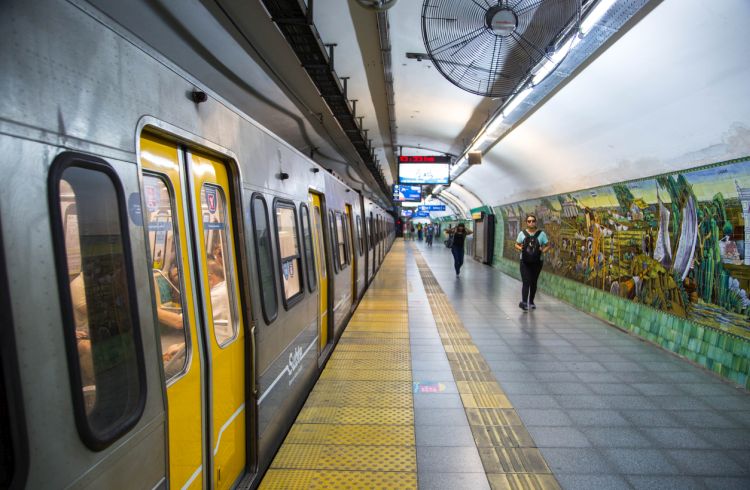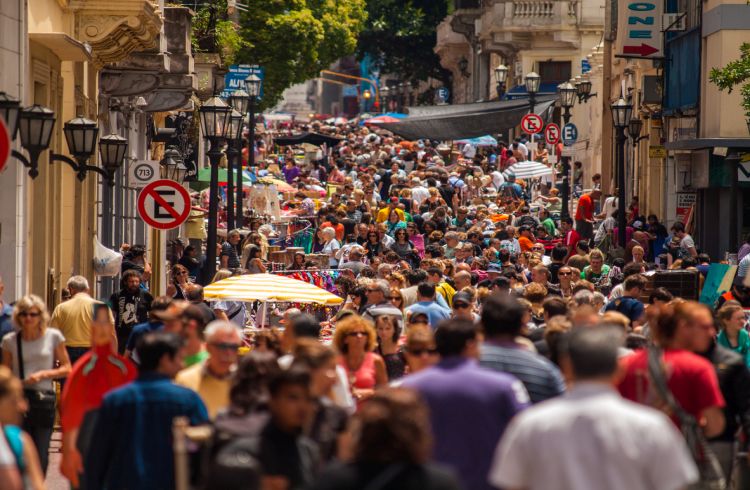Transport Tips: How to Get Around Buenos Aires Safely
Buenos Aires is one of South America's most exciting and vibrant cities. While the city is relatively safe, here are some tips to stay safe on public transport.
 Photo © iStock/Goddard_Photography
Photo © iStock/Goddard_Photography
From the popular Caminito strip and Casa Rosada to the charismatic nightlife scene, there’s always something to see or do in Buenos Aires. With so many neighborhoods to check out, chances are you’ll be out and about from dusk to dawn.
The good news is that Buenos Aires is relatively safe compared to its South American counterparts. Most of the inner city streets and neighborhoods are clean, well maintained and well-lit at night. Plus, the public transport system, especially the bus service, has had a spruce up in recent years.
But there are little nuances to navigating your way around the city. So before you take a stroll through La Boca, or hit up one of the city’s all-night boliches (nightclubs with dancing), it pays to read up on the best ways to get around this city quickly and safely. The last thing you want is to end up in the wrong part of town or to stand around looking lost.
- Public Transport in Buenos Aires
- Local Buses and Subway
- Stay Safe - Hold on Tight
- Guia T - Pocket Guide to Buenos Aires
- SUBE - Buenos Aires Transport Card
Public transport in Buenos Aires
If it’s your first time in the city, you'll probably be calling Palermo, Recoleta or Puerto Madero home for a few days. These neighborhoods are popular with visitors and expats, and as soon as you step out of your hotel you’ll find just about everything you need to experience Buenos Aires’ hottest dining and club scenes.
But burst through these cosmopolitan bubbles, and you’ll discover there’s so much more to explore, and public transport can be a great, affordable way to see it all.
Note: if you’re traveling alone late at night, especially females, it’s best to avoid the subway. Opt for a registered taxi or travel with a friend instead.
Local buses and subway
Previously shunned by the middle or upper class, the Colectivo (local bus) and the
There’s a service that runs through, or close to, all popular destinations and attractions. But keep in mind this is a city of about three million people, so it can get pretty crowded, especially during weekday peak periods, which are around 8-9am and 6-8pm.
As you would in any crowded area while traveling, make sure you stay alert and watch out for pickpockets who might bump or slide up against you.
You’ll be quick to notice even locals keep their belongings, such as handbags and laptop bags, very close to them while traveling around. Wear bags across and over your shoulder if possible, and zip them shut. Don’t forget to leave your valuable jewelry at home. Wearing anything sparkly on public transport (or anywhere in South America, for that matter) is a big no-no.
If you’re more of a backpacking kind of nomad, you’ll want to wear your bag around your front, not your back.
Depending on the neighborhood, avoid standing around flicking through your smartphone on public transport (or on the streets) either. La Boca, especially just outside of the main Caminito area, and Retiro, mainly around the market and train station, are two popular visitor destinations where you’ll want to stay on your guard. That witty social media post isn’t worth tempting even the most rookie criminal! So keep it in a safe, closed section of your bag or in one of your front pockets. That goes for wallets, too.
Stay safe - hold on tight
Another safety tip is to get on or off the bus and train quickly and to hold on tight.
On most streets and roads, the bus won’t pull up to the curb, even if there’s a queue. Sometimes, the bus will barely make a complete stop to let people on and off, so you’ll need to be on your A-game. Also, watch out for cyclists in the bike lane or motorcyclists zipping nearby before you get on or off.
Once the last person has stepped up, drivers are quick to close the doors and drive off again. It’s followed by a rollercoaster of a ride, so grab a seat or hold on to something quick!
This all makes for a quick and efficient ride, but a somewhat chaotic one too! Some travelers have reported their ankles or shoes getting stuck in the door before they’ve fully got on board or off their bus or train.
Guia T - pocket guide to Buenos Aires
If you’re planning on finding your own way around Buenos Aires, a Guia T will be your best friend. It’s a pocket guidebook of the city’s 100+ bus lines and tiny maps of the streets, roads, and intersections too. It’s handy for navigating the public transport system and for pedestrians as well. Even the
You can pick one up at kiosks and newsstands around the city, and it will cost around 5 pesos.
Got internet access? In January 2016, Google Maps upgraded its public transport function to include the metropolitan area of Buenos Aires. Around 800 routes and 34,000 bus and train stops in the BA metro area were added to the Google Maps app, which means you can now type in your location and destination in and the app will work out the best route for you.
SUBE - Buenos Aires Transport Card
Recently, the city moved to an electronic card system, so instead of loose change, you’ll now need a SUBE card to travel on the bus and subway.
You can buy a SUBE (pronounced “soo-
'un
You can buy one card per person, or if you’re traveling in a small group or as a couple, you can also use one card for multiple people on the same trip.
To use the bus, you’ll need to tell your driver the destination first (bet you’re glad you picked up that Guia T first, right?), then for the correct fare, tell the driver where you’d like to get off (by cross street, or name if it’s a well-known destination), and the driver will program your fare into the card reader.
Then you tap your card, and you’re done. There’s no need to tap off at the end of the trip. Another way is to tell the driver how much to charge. To travel seven to 10 blocks, or say a few miles, you’ll need three to four pesos. So, you could say "cuatro pesos,
Related articles
Simple and flexible travel insurance
You can buy at home or while traveling, and claim online from anywhere in the world. With 150+ adventure activities covered and 24/7 emergency assistance.
Get a quote


No Comments